When Datsun unveiled the 240Z, few people doubted that it had drawn inspiration from the iconic Jaguar E-Type. Both featured long hoods concealing six-cylinder engines. Both were strictly two-seaters, and their tails featured a liftback arrangement. The similarities continued below the skin, but while the company vehemently denied it, they didn’t fool the motoring press. The press corp also wasn’t disappointed, with many tagging the 240Z as the best volume production car to emerge from Japan to that point. After initial success, buyer sentiment for the original 240Z cooled as each successive model brought more size, more power, and greater equipment levels. The 240Z seemed destined to fade into obscurity through the 1980s. Suddenly, potential buyers remembered how well these classics drove, and an unloved sports car gained a new lease on life. Our feature 240Z rolled off the production line in November 1970 and presents superbly. It has no immediate needs and is ready to be enjoyed by a lucky new owner. Located in La Crescenta, California, the seller has listed the Datsun for sale here on Craigslist. They have set a sale price of $33,900. A big thank you goes out to Barn Finder MattR for spotting this gem for us.
Monte Carlo Red was one of the shades offered by Datsun on the 240Z’s release, and it remained on the color palette until August 1971 when the company replaced it with Code 110 Red. The new color wasn’t as vibrant as the Monte Carlo that graces the panels of this 240Z. The seller’s listing is slightly confusing, but my interpretation is that we are looking at most of this car’s original paint. If that’s true, its condition is pretty impressive. It shines beautifully, with few visible flaws or defects. The panels are as straight as you could hope to find, while the best news is this classic’s lack of rust. The owner supplies a comprehensive set of photos revealing the known trouble spots like the floors, spare wheel well, hatch opening, and lower rear quarter panels. These areas are spotless, demonstrating the benefit of a life spent in California. The wheels and front spoiler aren’t original, but they don’t look out of place. Removing them would be easy if the buyer craves originality, making it a choice that some might consider.
In past articles, I’ve discussed the bulletproof nature of Datsun’s L-Series engines, and their extensive competition success helps support my stance. With double valve springs and a dual-row timing chain, they were made to last. Some even scored a forged steel crank from the factory, making them happy to rev their head off! The L-Series selected for the 240Z is a 2,393cc OHC six-cylinder that inhales deeply through a pair of SU-style Hitachi carburetors to produce a healthy 150hp. That power feeds to the rear wheels via a four-speed manual transmission, while four-wheel independent suspension ensures that the “Zed” grips tenaciously in the turns. Although not a genuine muscle car, a ¼ mile ET of 16.4 seconds remains respectable for a vehicle with a modest power output. This 240Z is numbers-matching and is in sound mechanical health. The engine bay presents as nicely as the exterior, and it doesn’t flatter to deceive. The Datsun has been appropriately maintained throughout its life. The automatic choke system works as it should, allowing the engine to roar into life at the first turn of the key. It runs and drives well, with the transmission shifting smoothly. It has no mechanical needs, meaning the buyer could fly in and drive home behind the wheel of this classic.
When considering the interior trim of an early 240Z, two main components require inspection. The first is the unique quilted vinyl on either side of the transmission tunnel. It is prone to physical damage, and it is difficult to locate replacement vinyl with the correct quilting pattern. That aspect of this interior looks excellent. More critical is the dash pad. UV rays can inflict heavy damage, resulting in cracks in various locations. The area above the central gauge cluster is the most prone, although the section in front of the driver can also fail. This car’s pad is generally good, with only a single crack between the speedometer and tach. That will leave the buyer with choices to make. Throwing a cover over the pad is easy and cheap, while a cap sells for around $150. From there, things become expensive. A reproduction pad retails for $800, while a reconditioned original sells for an eye-watering $2,000. Due to the long-term investment potential of this Datsun, the most expensive option could also prove the best. It will depend on how healthy the buyer’s wallet looks when they park the car in their driveway. The remaining interior trim looks good, with the seats recently receiving new covers and foam. The original owner ordered the car with air conditioning, and while most of the system is intact, items like the compressor are gone. The red shifter boot isn’t a factory item, nor is the upgraded stereo featuring a CD player. Once again, the buyer could reverse any changes if they seek an unmolested appearance.
The 240Z was Datsun’s “halo” car heading into the 1970s, and it demonstrated to the world that the company could produce more than cheap economy cars. Between the sales success of the 240Z and the competition achievements of its iconic “510” model, the company cemented its place as a serious player on the automotive stage. The 1980s and early 1990s were dark days for the 240Z. The cars still offered a rewarding driving experience, but this was overshadowed by the luxury equipment available on the latest offerings from Datsun. The 240Z became an unwanted child, and values plunged into low four-figure territory. However, times change. Driving enthusiasts rediscovered the 240Z, and as demand grew, values followed suit. It isn’t unusual for a spotless Series 1 240Z to realize a sale price above $45,000, although $60,000 is not out of the question. This market trend shows no sign of reversing, and when you look at what this car offers and the asking price, it seems to represent one of the great buys of 2022.
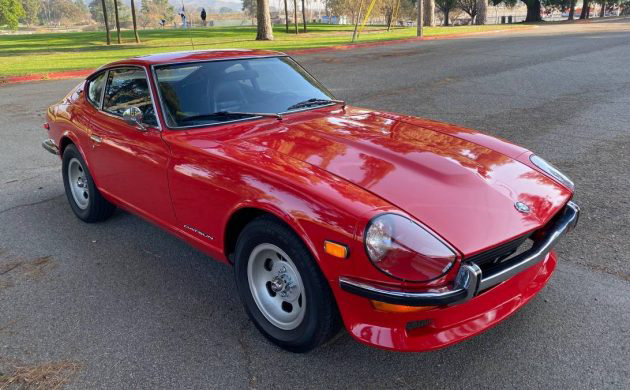
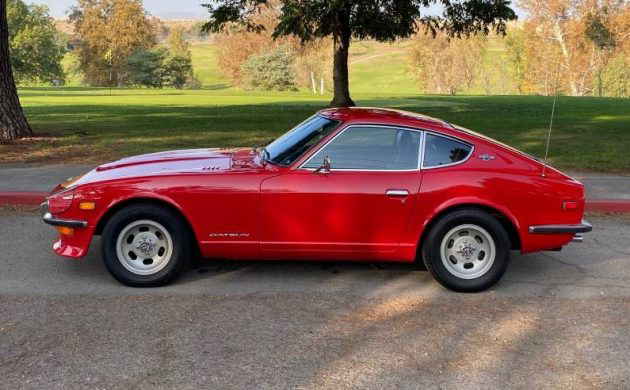
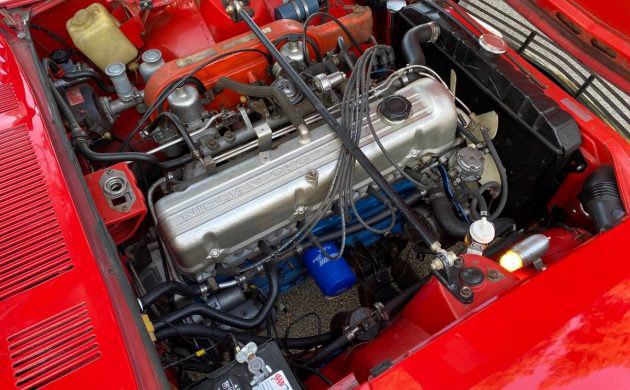
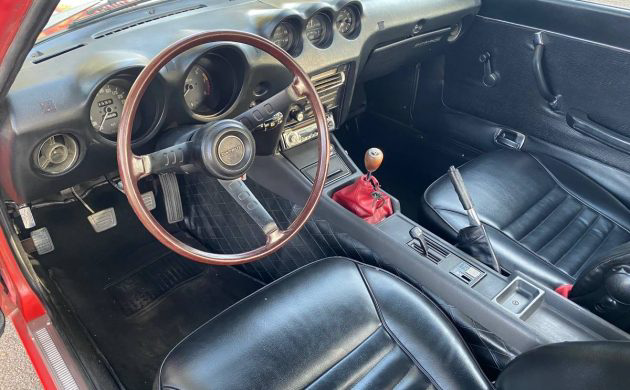
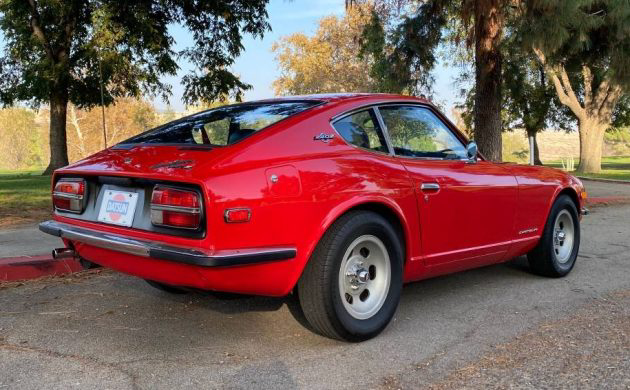


Beautiful car. Interesting comment on the wheels. When these cars came out and hit the streets you rarely saw one without aftermarket wheels. We even bought a set of American Libre wheels before our ordered car got to the U.S. shores.
I like.
My memory is that my ’71 240, which had the 240z on the side between the door and the back windshield and the vents below the back windshield had a build date of November, 1970 if my memory is correct. Or is it fading with my age? I know it was a ’71 and the above is correct except maybe the build date.
A fine car here. Good luck to the new owner.
The best Z cars had carbs.The headlamp covers were always a nice touch.
Love these early Z cars. This one has all the right looking period pieces installed. I normally would like or see a set of Panasports on one of these but the wheels chosen go with the over all vibe. Someone is going to have a very nice example.
I heard the Ferrari Daytona was the inspiration and not the E Type..Nice Z..
About that ‘automatic choke’. Really? What’s that funny lever on the console?
On my 1970 240Z that was the choke. So much for trustworthy commentary.
There’s probably a more appropriate way of making your point, ph
Jaguar dissed a proposal from Nissan/Datsun for a joint venture.
The Santa Barbara dealer wouldn’t sell your one or entertain your order unless you added a couple thousand dollars worth of aftermarket gadgets, which is probably why you hardly ever see “original” wheels.
I knew a guy that had one that was scary fast, cam, headers, Webers etc. One night when he was mad at his girlfriend he was driving it too fast over this hill and bent it really badly when he hit a tree on the side of the car about four feet in the air. So long to one very cool Datsun.
Right hand drive models are being repatriated to Japan and huge sums are being paid for good cars. Perhaps E types are a poor man’s 240Z!!
The German fellow who designed the 240 Z–Count G-something (sorry, I forget…and he also designed the BMW 507), was inspired by both the E Type and the Ferrari. I remember reading that Nissan also fed the E Type coupe’s specifications and those of the Austin-Healey 3000 Mk III into a computer, to help inspire them.
While I like the red 240 featured here, I am not a fan of the areas where the chrome has been blacked out, but to each his/her own.
A computor in 1969? Maybe a abicus?
JS, computers were around in the 60’s, just not in everyone’s hands like today. The open heart unit where I worked back in the 70’s had computers back into the 60’s some of the old hands told me. The computers there would actually keep track of blood loss and give us messages onscreen like ‘Consider transfusion,’ or ‘Return to surgery recommended.’
I think the designer was Albrecht Goertz. A web search will furnish a lot of information.
Mr. Havriluk: thank you for “educating” me as to what a web search is. Perhaps I just didn’t see it as a matter of life and death to stop my comment so as to go on line over something quite minor. I have noticed that you also criticized Adam Clarke rather strongly, by saying quite sarcastically about him and his choke mention: “So much for trustworthy commentary”. Hm…did you get up on the wrong side of the bed?…
I’ve always loved these cars. But based on sales and auction results I’ve seen, this car is priced very low, and I’m surprised it’s still listed.
Bamapoppy, yeah your right. Thinking back on it in the early 70s my High School had a couple of teletypes we linked to an IBM 360 at the University of Virginia with a 220 baud phone link. The programs were written on a punched paper tape. That led me into an advanced computer course when I went to university where we punched 80 charachter cards and a lifetime disdane for computers. Way too much garbage in garbage out for me.